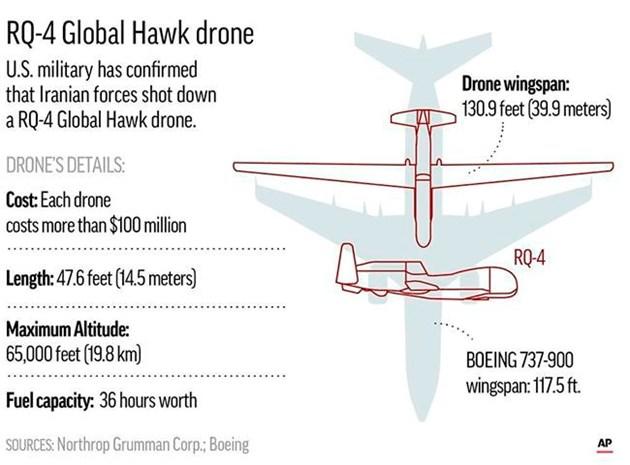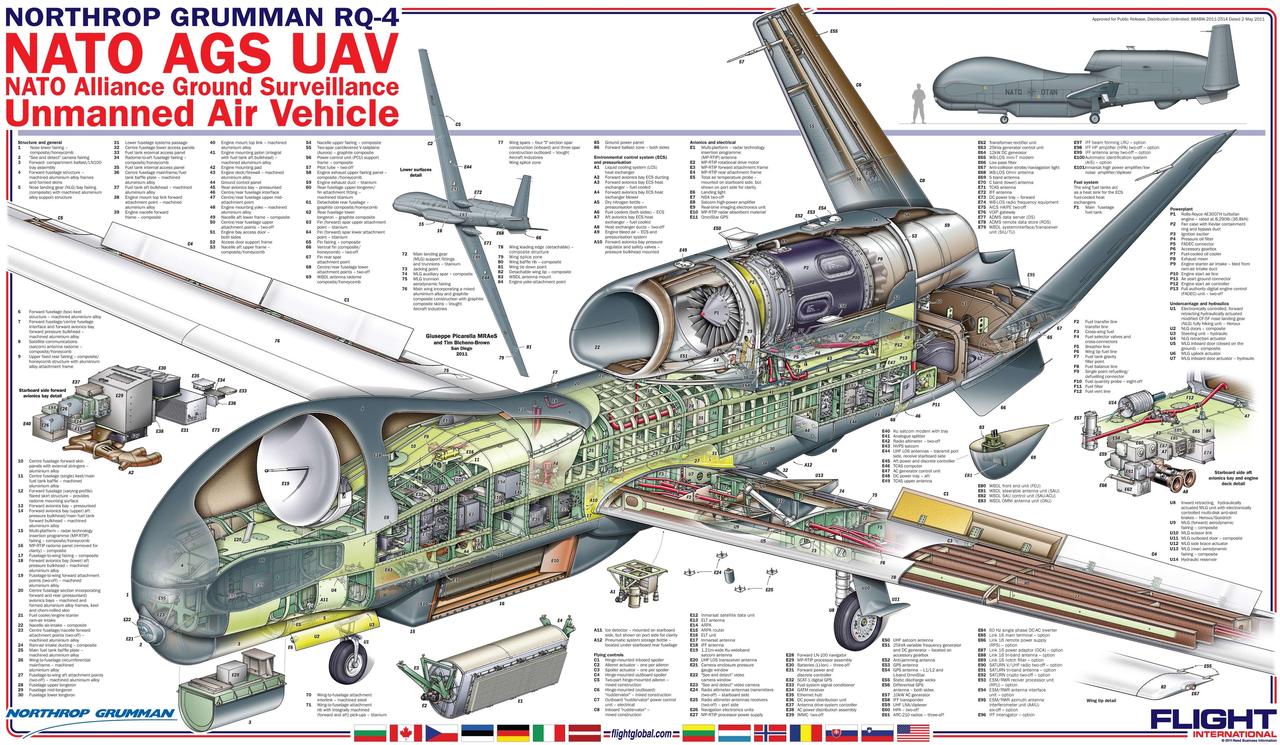The Drone Iran Shot Down Is A Quarter Billion Dollar Surveillance Monster
SOURCE: ZEROHEDGE
The incident comes after the U.S. accused Iran of attacking two fuel tankers in the Gulf of Oman. The U.S. also claims that Iran attempted to shoot down another drone, an MQ-9 Reaper, and failed. The U.S. has also linked Iran to an attack on a Reaper drone in Yemen two weeks ago that caused the drone to crash.
However, last week's attack was on a far more expensive and technologically advanced drone, indicating a "more definite escalation" according to the report.
Thomas Karako, director of the Missile Defense Project at the Center for Strategic and International Studies said: "There's a lot going on here, and we're probably only seeing some of it. This is a more expensive, higher-altitude, more capable, long-range intelligence surveillance reconnaissance craft. If they’re shooting down aircraft in international airspace over international waters, that's likely to elicit some kind of measured reprisal."
Karako says that details on the airspace won't be released until the U.S. releases more about the drone's flight path: "Whether they want to release that is more of a policy decision. But thus far CentCom is insistent that it was in international airspace."
He continued: "Part of the selling point is Global Hawks fly so high and normally they should be secure from being shot down. It’s not incredibly difficult to shoot down a system like that, but it’s comparatively difficult. It shows resolve on the political side."
Drones like the one shot down Thursday are described as "massive surveillance platforms" and have been in operation since 2001. They have a wingspan of more than 130 feet and a takeoff weigh of more than 16 tons. Their range is more than 12,000 nautical miles, they can fly as high as 60,000 feet, and they can fly for 34 hours straight. They have no offensive capabilities and can cost up to $220 million each.
For surveillance, they include "infrared and thermal imaging, radar, and electro-optical imaging in their arsenal of sensors". They also use large telephoto lenses to get detailed views of targets.
"There could always be super secret spy tech onboard that we don’t know about," says Ulrike Franke, a policy fellow at the European Council on Foreign Relations and a drone researcher.
Franke says its likely that this drone, however, was a "typical surveillance workhorse" that was downed for geopolitical reasons instead of for technological recon. Last year, Israel said they shot down an Iranian drone that was a "copy" of a U.S. Sentinel drone that Iran captured and claimed to reverse engineer it in 2011.
"Destroying the New World Order"
THANK YOU FOR SUPPORTING THE SITE!
Latest Activity
- Top News
- ·
- Everything
What was the Significance of the F-94 C and What role in History?
FLUORIDEGATE: An American Tragedy. a film by Dr. David Kennedy
Rendezvous With The Unknown
Shadows in the Wind
© 2025 Created by truth.
Powered by
![]()



You need to be a member of 12160 Social Network to add comments!
Join 12160 Social Network